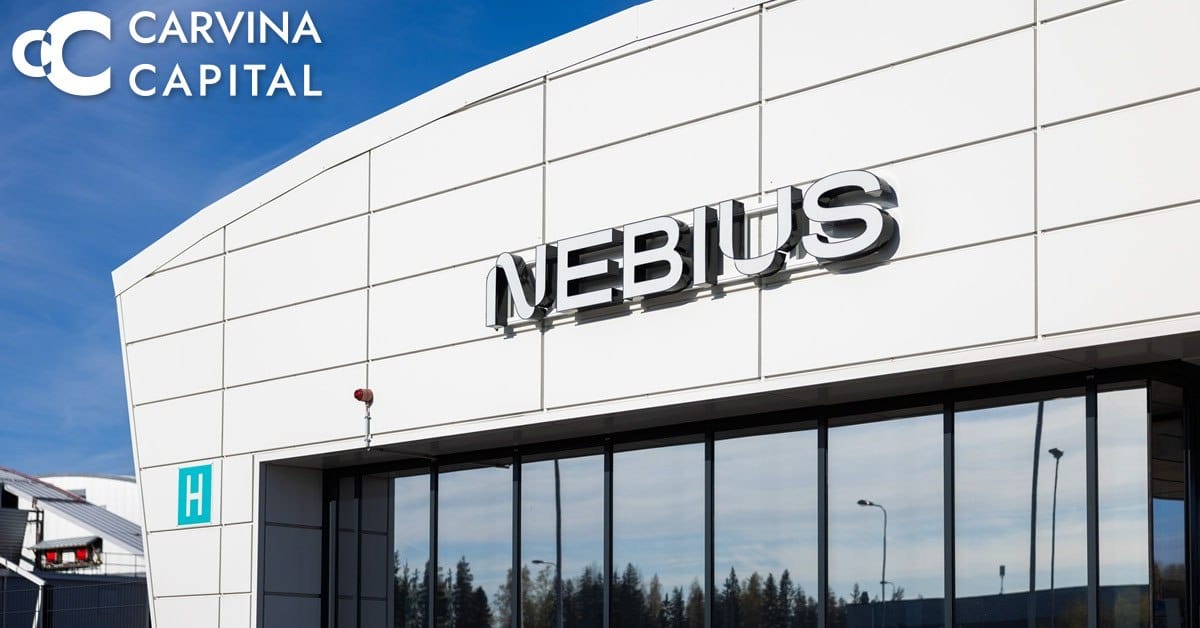AI infrastructure investment, neocloud GPU capacity, data-centre power constraints, accelerated model training timelines, market structure shifts, regulatory scrutiny, semiconductor supply risk, and enterprise adoption signals across the current fiscal period
Carvina Capital frames the Microsoft–Nebius agreement as a live test of how fast specialist platforms supply compute to match product roadmaps over the current fiscal period. The deal stands at $17.4 billion with an option that lifts the commitment to $19.4 billion, while market action registers a move of more than 50% in Nebius Group shares during the latest session. Microsoft sets the transaction within a wider $33.0 billion allocation across neocloud providers including CoreWeave, Nscale and Lambda, securing access to more than 100,000 Nvidia GB300 chips for internal development teams. As Peter Jacobs, Director of Private Equity at Carvina Capital, observes within this context, “the scramble for compute now determines economics, not the other way round”, and “product releases advance at the speed of delivered power and GPUs over the next four quarters”.
Specialist platforms supply capacity at a pace that proprietary estates struggle to match. AI compute demand grows at 82% over 2021 to 2025, data-centre occupancy targets move from roughly 85% in 2023 to above 95% by late 2026, and forecasts point to data-centre electricity consumption rising by 50% through 2027. Carvina Capital notes that pricing differentials reinforce the case for external partnerships. GPU instances from neocloud operators run up to 66% below standard hyperscale rate cards, with two- to five-year agreements improving budget flexibility across the next eight quarters. As Jacobs puts it, “flexible terms that land capacity this quarter matter more than ownership that turns up after two winters”, adding that “operating-expense constructs support planning discipline through the current fiscal period”.
Microsoft’s procurement posture extends across multiple suppliers. Commitments translate to $12.8 billion with CoreWeave through 2029 and $7.7 billion with Nscale for renewable-powered AI capacity. These structures deliver immediate throughput while internal builds continue on a separate track. The dual pathway provides optionality on geography and regulation, and it narrows execution risk where local permits, grid connections and water rights lengthen timelines. Carvina Capital highlights that this approach reduces single-vendor concentration while reinforcing regional coverage where Azure capacity requires strengthening.
Implementation risk remains material. Regulatory oversight across jurisdictions raises compliance complexity for chip flows, privacy and safety standards through the current and next fiscal periods. Power is the hinge variable as utilities and operators negotiate connection queues that tighten quarter by quarter. Semiconductor supply forms another constraint. If tariff proposals under consultation evolve into policy, component costs could rise by 10% to 30% within the first 12 months of enforcement. New fabrication projects require investment in a range of $25.6 billion to $100.5 billion with development cycles that extend beyond current budgeting horizons. Against that backdrop, Jacobs cautions that “scale only compounds advantage when supply chains stay predictable”, and underscores that “GPU delivery schedules over the next 12 to 18 months will decide which platforms gain share”.
Market structure continues to tilt toward a hybrid norm. Proprietary estates focus on long-duration baseload and security assurances, while specialist partners deliver burst capacity for training and inference. The AI infrastructure market now projects to $638.5 billion by 2034, expanding at 26.6% annually over the period, and a broader supplier set lowers exposure for enterprises progressing from pilots to production over the next four quarters. According to Jacobs, “choice and speed push organisations to accelerate deployments provided they can book GPUs and power with certainty”.
Financial scrutiny intensifies as capital concentrates in a narrow set of inputs. A $33.0 billion outlay invites questions on utilisation through 2026, margin sensitivity and overbuild risk if demand normalises. The counterpoint is that delayed capacity risks revenue slippage where feature launches require large-scale training runs this year-to-date and into the next two to three quarters. On balance, the neocloud route buys time, shortens feedback loops between model development and deployment, and positions the buyer to align inventory with live product cycles. Carvina Capital views the signal as clear: partnerships that unlock power, GPUs and bandwidth over the next 12 months define competitive trajectories across the sector.
About Carvina Capital
Carvina Capital Pte. Ltd. (UEN: 201220825D) operates from Singapore and commences in 2012. The firm focuses on research-driven, long-only public-equity strategies for institutional and professional clients, while evaluating pathways for products accessible to retail investors. The research discipline and risk controls aim to compound capital through full market cycles. Further details appear at https://carvina.com. Media enquiries: Huacheng Yu — media@carvina.com





























